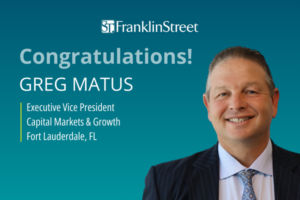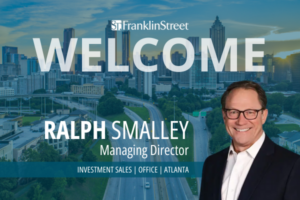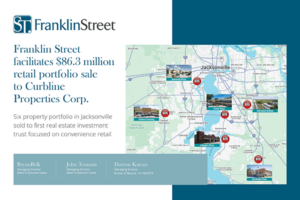By Joseph Landsberg, Director, Capital Advisory
As we’ve seemingly adjusted to new lifestyles as a result of COVID-19, aversion to pandemic risk has also subsided. Commercial and multifamily debt financing is making a full comeback. Fannie Mae and Freddie Mac have reduced the COVID-19 reserve requirements to six months and in many instances, where the loan-to-value (LTV) ratio is lower, have removed the restrictions all together. Community banks have also begun to increase their lending guidelines, meaning borrowers are able to stretch to secure higher valued buildings.
These small shifts have created a lending landscape that is catalyzing new deals. We have seen multiple regional banks offer partial and full-term interest-only options as a way of gaining market share against competitors. This aggressive lending was unheard of last year.
However, despite major steps toward normalcy, there is still one lagging market: hospitality.
Hospitality Hurdles
The reason for the hospitality lending lag is borne out of the duality of risks: this asset type serves as both a business and a building. People need to live somewhere and in certain industries they need to work somewhere, but they don’t need to travel and stay at hotels.
That combined with high operational costs—resulting in tighter margins—is why lenders worry about owners requesting deferred payments and possible bankruptcy filings in a depressed market.
Continued pandemic-related threats, like the Delta variant and the rise in construction and labor costs, have also caused lenders to become more conservative.
…
In addition, business travel is still not close to pre-pandemic levels. According to Deloitte, total corporate travel spend in Q4 2021 is projected to reach somewhere between 25 to 35% of 2019 levels.
The South Florida Reward
Despite these risks, South Florida is well-positioned for a hospitality lending rebound.
That is fueled by the strong performance of Miami as a leisure market. For example, this summer Miami recorded average daily rates that exceeded destination averages in 2019 and occupancies in the Magic City were also a full six percentage points above national averages in June 2021.
The recent migration of New Yorkers, and residents of other high-taxed states, to Florida (nearly 1,000 people are moving to Florida every day), has sparked a greater need for restaurants and retail, further driving the tourism market.




